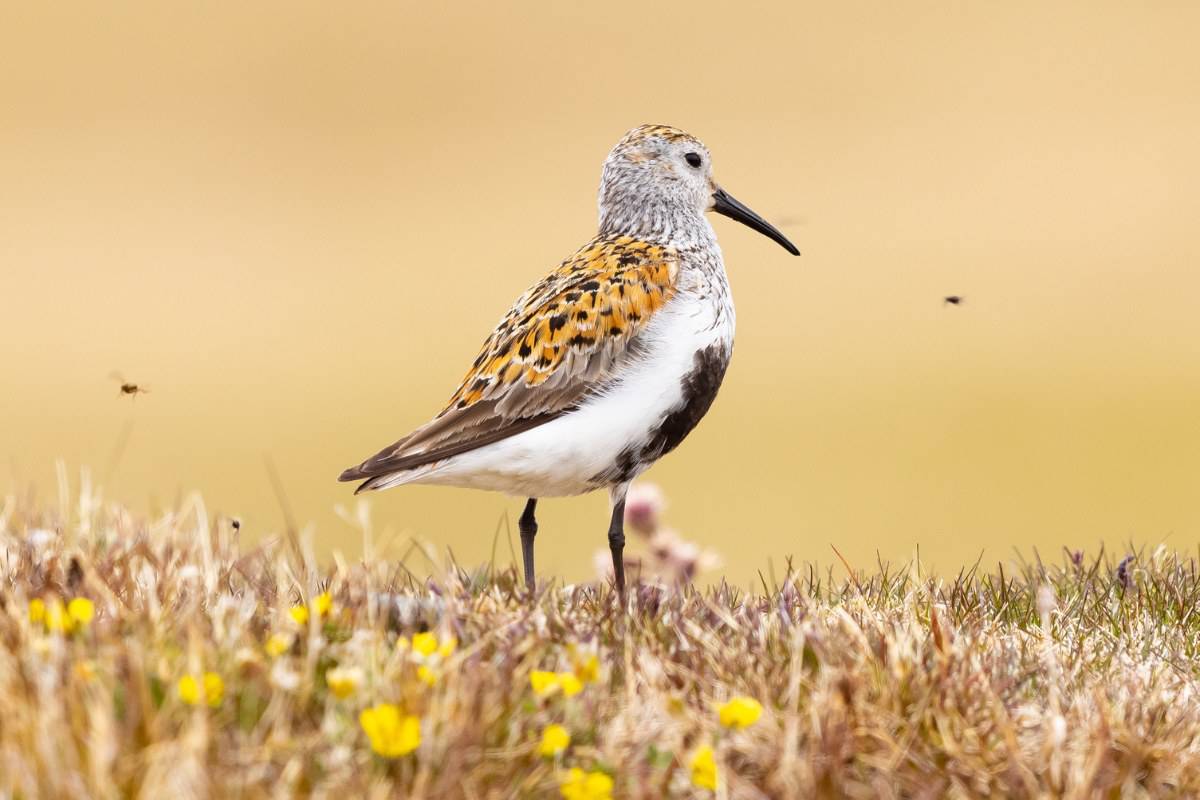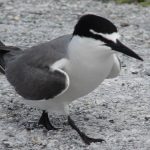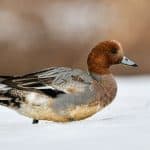Common Name: Dunlin
Scientific Name: (Calidris alpina)| Size | Diet | Range in Hawaii | Status in Hawaii |
|---|---|---|---|
| 8 in. - 10 in. | crustaceans, mollusks, aquatic insects and plants | O'ahu, Maui, Kaua'i, Molokai, and Big Island | Least Concern |
The Dunlin, also known as Calidris alpina, is a small shorebird species that is native to the Arctic regions of North America, Europe, and Asia. While the species is not native to Hawaii, it is a regular winter visitor to the islands. With its distinctively long bill and unique foraging behavior, the Dunlin is a fascinating bird species that has captured the attention of birdwatchers and avian enthusiasts around the world.
In this article, we will explore the world of the Dunlin, its unique characteristics, and its regular presence in Hawaii.
Dunlin
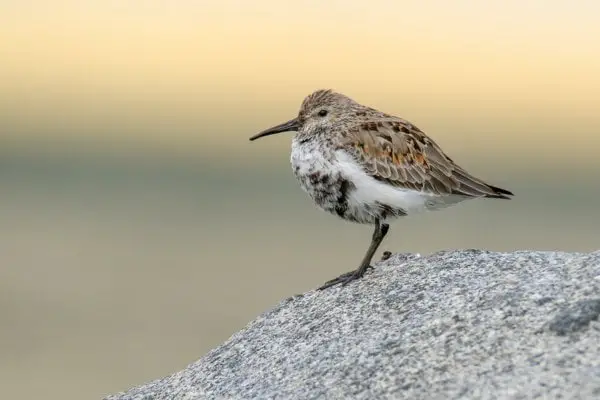
Appearance
The Dunlin flaunts a captivating appearance, captivating the eye with its petite yet dynamic frame. Measuring around 8 to 10 inches in length, its compact stature is adorned with a splendid palette of feathers. During its breeding season, this avian gem wears a coat of warm browns and russet tones, accentuated by striking black belly patches.
As the seasons shift, so does its attire – in winter, a more subdued grayish plumage takes center stage, blending harmoniously with the coastal landscapes it frequents. Its dainty bill and signature long, slightly curved beak reflect its refined adaptation to probing the sandy shores for delectable morsels.
Diet
As a skilled forager, it thrives on a diverse diet that mirrors the bounty of its habitat. This dainty shorebird elegantly probes its slightly curved beak into the damp sands, unearthing a treasure trove of delectable morsels. From tiny marine invertebrates like crustaceans, mollusks, and worms to aquatic insects and plant matter, the Dunlin is a versatile epicurean.
Nesting
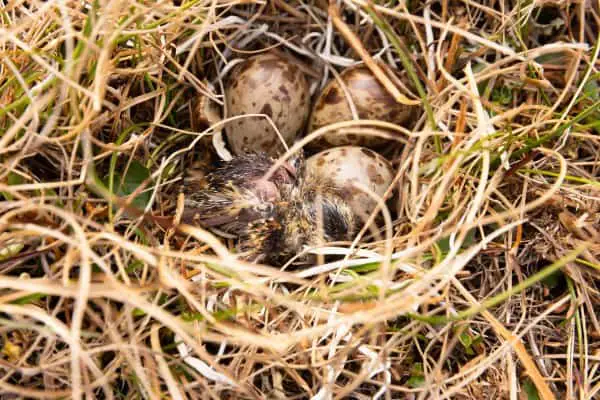
In the secluded corners of coastal landscapes, the dunlin weaves its tale of survival. With feathers that mirror the hues of its surroundings, it harmonizes with the environment like a master of camouflage. As the breeding season beckons, these agile creatures venture to the northern realms, seeking solace in the Arctic tundra and boreal landscapes.
In this stark, frozen expanse, the dunlin crafts its nest with utmost care. A simple depression in the ground, lined with down feathers plucked from its own body, becomes a cradle of potential life. Here, amid the harsh beauty of the Arctic, the dunlin’s eggs find protection from the elements, a tender promise nurtured by the devoted parents.
But this nesting dance is not without its challenges. The dunlin must contend with the capricious nature of Arctic weather, its diligent vigilance a testament to its determination. Amid freezing winds and unyielding frost, the dunlin takes turns incubating its precious cargo, a symphony of shared responsibilities that binds mates ever closer.
As the eggs hatch, a transformation occurs—fuzzy bundles of down evolve into downy chicks, miniature marvels of vitality. In a matter of weeks, these small beings must gather the strength to undertake a remarkable migration, a voyage that spans thousands of miles. Guided by an innate compass, the dunlin navigates from the northern reaches of its birth to warmer shores where bountiful feeding grounds await.
Behavior
At low tide, as the sea recedes to unveil its hidden treasures, the dunlin emerges like a troupe of agile acrobats. With precision and coordination, they traverse the exposed mudflats. In a delicate balancing act, they maneuver amidst the muck, their quick movements and keen eyesight turning the muddy canvas into a gourmet feast.
As the tide’s fingers creep back, the dunlin morphs into an ethereal ballet, assembling in large, intricate flocks that spiral and weave across the sky. Like synchronized dancers, they shift and change shape in perfect unison, their collective movements a mesmerizing display of instinctual choreography. In this fluid dance, they fend off predators, navigate shifting landscapes, and communicate their shared purpose.
During the breeding season, their behavior takes on a more intimate note. Males embark on spirited displays, flaunting their plumage with intricate flight patterns and melodious calls to woo potential mates. These courtship rituals are a testament to the dunlin’s dedication to passing on their legacy, showcasing their vitality and strength in a delicate courtship symphony.
Throughout their migratory journeys, the dunlin embarks on incredible feats of endurance. From Arctic nesting grounds to distant wintering sites, these birds span vast distances with an uncanny ability to find their way. Their behavior is a testament to a navigational prowess honed over generations—a celestial map etched into their being.
Habitat
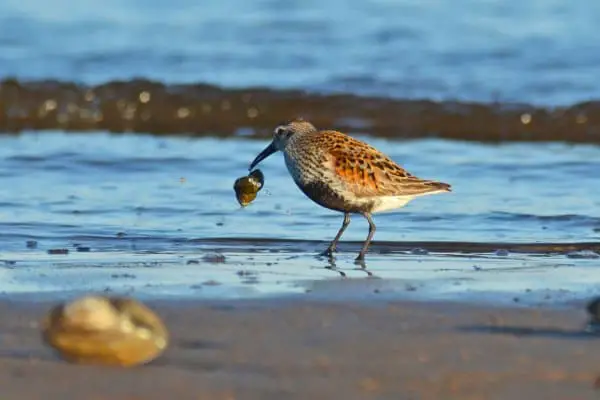
The dunlin thrives in a world of coastal wonders. From Arctic tundras where it crafts nests amidst sweeping landscapes, to intertidal mudflats where its delicate bill seeks hidden treasures, its habitat is a dynamic tapestry of land, water, and sky. These agile birds grace estuaries and open skies during migration, embodying the harmony between ever-changing environments.
Range
The Dunlin graces the Hawaiian Islands as a non-breeding visitor and regular winterer. Encounters have been documented in Northwestern Hawaiian Islands like Kure, Midway, Pearl and Hermes, Laysan, and French Frigate, and in the Southeastern Hawaiian Islands including Kaua’i, O’ahu, Moloka’i, Maui, and Hawai’i I. These sightings, primarily occurring between October and March, unveil the annual migration dance of these shorebirds, bridging their Arctic breeding grounds with the Hawaiian shores.
Conservation Status
The dunlin (Calidris alpina) is evaluated by the International Union for Conservation of Nature (IUCN) and listed as a species of “Least Concern.” This classification indicates that, at the global level, the dunlin population is relatively stable and not currently facing a significant risk of extinction.
Interesting Facts
1. Conservation indicator
The dunlin’s presence and abundance in coastal habitats can serve as an indicator of the health of these ecosystems. Changes in dunlin populations can provide insights into the overall well-being of intertidal zones and coastal environments.
2. Social dynamics
During migration and winter, dunlins form large mixed flocks with other shorebirds, such as sandpipers and plovers. These flocks can include thousands of individuals, and the dunlins maintain a hierarchical social structure within them.
3. Distinctive feeding technique
The dunlin’s feeding behavior often involves a “sewing machine” motion—rapidly probing its bill into the mud or sand before swiftly withdrawing it. This technique allows the dunlin to efficiently locate and capture hidden prey.
4. V-shaped flocks
When dunlins take flight, they often form distinctive V-shaped or wavering flocks. These formations optimize aerodynamics and allow individuals to benefit from reduced wind resistance.
5. Artificial light impact
Artificial light from human activities can disorient and disrupt the migration of dunlins. Bright lights can cause them to become disoriented and collide with structures, posing a threat to their well-being.
Frequently Asked Questions
1. Can dunlins swim?
While dunlins are primarily shorebirds adapted for foraging in intertidal zones, they are not strong swimmers. They are more comfortable wading in shallow water or probing the mud and sand for food.
2. Can I see dunlins in my area?
Depending on your location and the time of year, you may have the opportunity to see dunlins during their migratory journeys. Coastal habitats, especially mudflats and estuaries, are common places to spot these birds during migration and winter.
3. What is the lifespan of a dunlin?
Dunlins can live for over 20 years in the wild. Their longevity allows them to undertake multiple migrations and breeding seasons throughout their lives.
4. Do dunlins have any cultural significance?
Dunlins have been featured in literature, art, and cultural traditions in various regions. They often symbolize themes of migration, adaptability, and the intricate beauty of coastal ecosystems.
